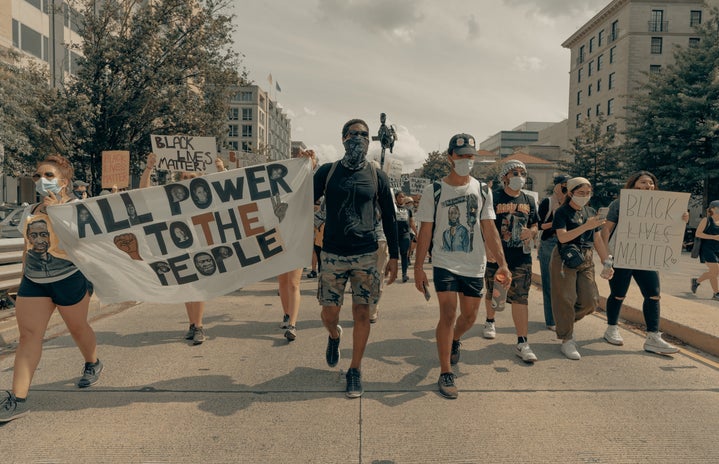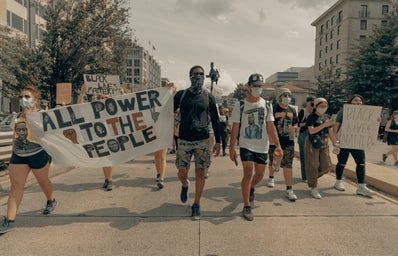Los Seis de Boulder, also known as the Boulder six, were six Chicano activists from CU Boulder who died in two car bombings on May 27, 1974. The first three – Una Jaakola, Reyes Martínez, and Neva Romero – were killed by a car bomb at Chautauqua Park. Forty-eight hours later, a second car bomb in the corner of 28th street and Canyon Boulevard killed Florencio “Freddy” Granado, Heriberto Terán, and Francisco Dougherty.
One of their allies, Antonio Alcantar, was heavily injured but survived. He was on the way back to the car when it exploded.
This year marks the 50 year anniversary of the bombings and different organizations around Colorado are looking to keep Los Seis’ story alive. Su Teatro is presenting“Cuarenta y Ocho Horas, a fictionalized version of what could have happened in the 48 hours between the bombings, at the Denver Center for Performing Arts. The play will be running for all of March.
Students can also see a community sculpture in front of the Albert and Vera Ramírez Temporary Building 1 with the faces of Los Seis. It was created by Jasmine Baetz, a CU graduate, in 2020 in honor of Los Seis after watching the documentary Symbols of Resistance, which was produced by Freedom Archives of San Francisco about the Chicano movement in Colorado and New Mexico.
Originally, the sculpture was to be a temporary exhibit, but after advocacy from UMAS Y MECHA, United Mexican American Students and Movimiento Estudiantil Chicano de Aztlán, the University of Colorado Boulder announced on September 6, 2020 that the sculpture would remain in front of the Albert and Vera Ramirez Temporary Building One as part of the University Libraries’ department of Special Collections, Archives and Preservation.
A memorial on Chautauqua Park followed.
Baetz told The Bold, “It’s hard to accept that the killings of Los Seis have been silenced for so long. My hope is that the sculpture’s preservation will weaken our institution’s historical amnesia around civil rights struggles at CU Boulder.”
The sculpture followed the creation of a mural in 1989 by artist Pedro Romero commemorating Los Seis on the walls of the University Memorial Center. The mural was moved to a conference room at Pueblo Community College.
For the 50 anniversary, UMAS Y MECHA “is bringing back the educational aspect and getting students interested in activism as well,” stated Brianna Centeno, a member of Concilio, the board for UMAS Y MECHA, and a representative of CU Connect. “We now have a scholarship in place called the Los Seis Memorial Fund that runs through the BUENO Center, and they will be naming six recipients who will each receive a 1,000.”
UMAS Y MECHA is still collecting donations to make this scholarship permanently endowed. Students will have to be involved in social justice – being an active member of UMAS Y MECHA, being an ethnic studies major or minor, or having a women and gender studies major or minor. They also will need to belong to an ethnically or racially diverse background and qualify for financial aid.
“It’s nice because I feel like, I mean, I think Los Seis were really fighting for educational opportunity, not just for themselves, but for their kids, for future generations,” Centeno explained. “And I think that we’re finally… We’re getting that by giving people these scholarships.”
So, what were Los Seis advocating for?
Los Seis involvement in the Chicano movement, known as El Movimiento, also inspired the exhibit at History Colorado. This exhibit covers topics such as land rights after the Treaty of Guadalupe Hidalgo at the end the Mexican-American War in 1848. The exhibit explains how members of the movement, including Los Seis, rebelled against the Coors Corporation, headquartered in Colorado, for their racist hiring policies, showed solidarity with the United Farm Workers movement, and protested the University of Colorado’s connection to Coors and their racist responses to Chicano students.
Los Seis advocated for racial parity and visibility at the University for Mexican-American students through participation on Equal Opportunity Programs like UMAS, the Black Student Alliance (BSA) and Oyate, the Native American and Indigenous Student Organization. The official page for UMAS Y MECHA states: “The original goal was to reach out to and increase the recruitment and retention of Mexican American and Chicanx students from throughout Colorado. UMAS took the initiative to do the work that the university was ‘unable’ (unwilling) to do.”
UMAS members would travel throughout the state between 1968 and 1972, recruiting students and spreading educational opportunities. By 1972 they had recruited over 1200 students.
It was during one of these trips, on route to the La Raza Unida National Conference passing Oro Grande, New Mexico, when UMAS alumni Ricardo Falcon was assassinated while in the company of Florencio Granado.
This was just the beginning of systematic attacks. Joe Franco and Paul Acosta were promoted to the director positions for UMAS. However, while they were Hispanic, they did not advocate or protect the students’ concerns, the department faced budget cuts, and under their leadership several financial aid applications were ‘lost.’
“At the time during the occupation, the members of UMAS were actually protesting against how the university had been withholding their financial aid checks, and a lot of them used those checks to pay their rent, to buy groceries,” Centeno explained. “These were withheld from members and from the Latino community, the Chicano community, as well as the black community because they [the University] didn’t want them to graduate.”
In response, UMAS members occupied the regent administrative building. After a couple of hours, the university relented to the students’ demands.
A year later, however, Chicanx students were still struggling to support the community and decided to occupy Temporary Building 1. They demanded for Acosta and Franco to be removed from their positions. The occupation lasted 18 days, and it was in the midst of these protests whenthe two car bombings occurred.
What was found out about their deaths?
According to the Los Seis de Boulder Community Sculpture Project, “The circumstances surrounding their deaths were never adequately investigated, and the cases were never solved.” However, the police and the FBI stated that Los Seis had probably been transporting bombs that had accidentally detonated.
However, in El Diario, a newspaper created by UMAS member Juan Espinoza, claimed the bombings had been executed as part of the FBI’s COINTELPRO program. 50 years later, the case remains unsolved.
The two car bombings happened months after three bombings in Boulder believed to be orchestrated by Chicano activists according to the Global Terrorism Dataset. However, this was never confirmed.
What’s the final reflection?
“I think that, obviously, it’s an uncomfortable conversation. You don’t like to think that the grounds that you’re walking on, essentially, have had blood on them. You wouldn’t like to think that, when you’re posting your pictures of the Flatirons, or going up to Chautauqua and hiking, that somebody died there,” Centeno stated. “And I think that it’s just easier not to talk about it. And it’s easier not to talk about these deaths because when we start addressing these deaths, we have to start addressing the problems that we’re facing right now.”
UMAS Y MECHA was eliminated as an Equal Opportunity Program some decades ago and became a registered school organization. Now, although they are more of a social group, Centeno says they are coming back to their roots, educating the community on social justice practices and activism through movie screenings of documentaries like Cointelpro 101, Symbols of Resistance, workshops, conversations at schools about educational opportunities and the history of El Movimiento, and the creation of the book club Arre! (Activists For Revolutionary Reading And Education) which meets Tuesdays at 5:00 pm in the Clare Small Arts & Sciences (CLRE) room 212.
UMAS Y MECHA hope the legacy of Los Seis, and all the activists like them, keep inspiring others to keep fighting against systematic oppression and injustices, as well as advocating for educational opportunities for underrepresented groups.
Que Viva La Raza.


